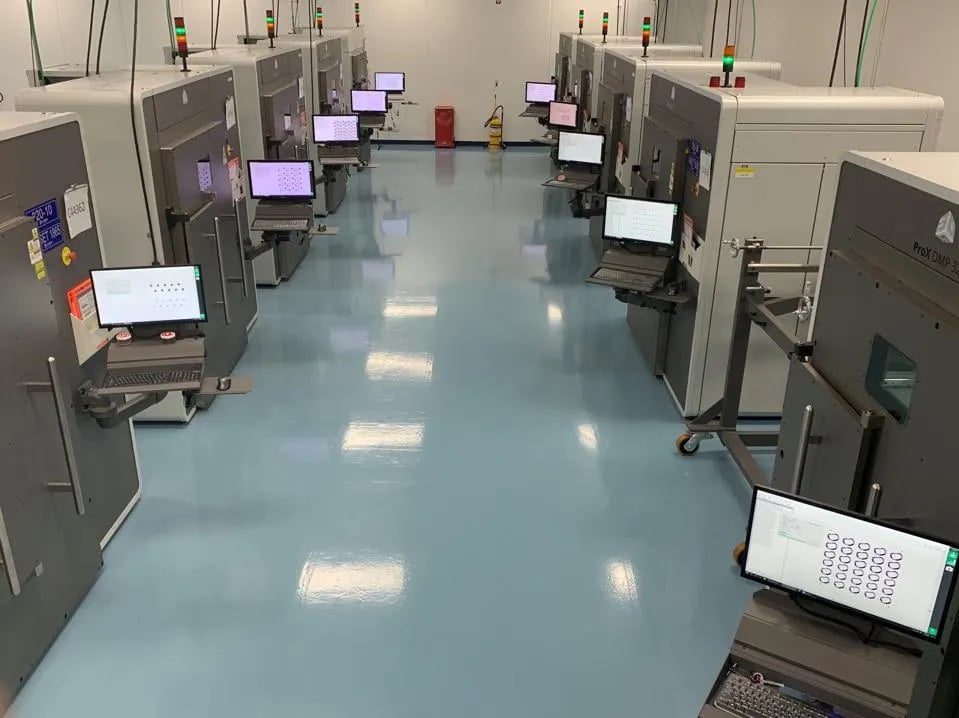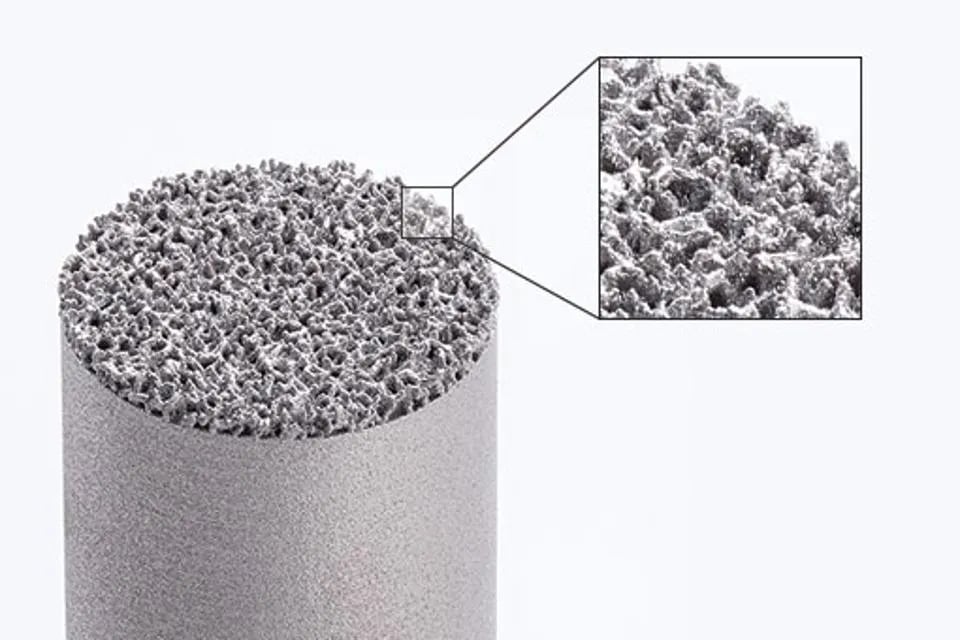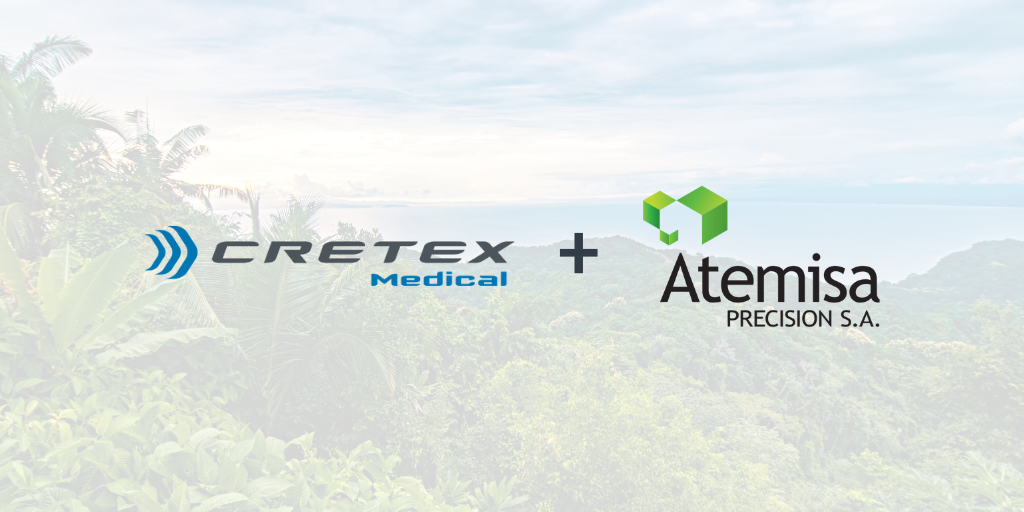This Pioneer In Using 3-D Printing For Medical Implants Has Charted The Course For How It’s Done
rms Featured by Forbes as “Pioneer” in 3D Printing for Medical Device
by Jim Vinoski, Forbes Contributor | February 3, 2020
Jim Biggs, director of NPI Technical Solutions at Cretex Medical | CDT, was featured in Orthopedic Design & Technology magazine.
The field of medicine has become one of the top business segments for groundbreaking use of 3-D printing. The adoption of the technology by rms Company near Minneapolis is a great example of how the industry has evolved to make use of the unique capabilities of 3-D printing, a.k.a. additive manufacturing (AM)–and it’s a good lesson for other businesses looking at how to make use of AM.
Founded in 1967, rms is a manufacturer of precision-machined components for the medical device industry and was acquired by Cretex in 1982. rms is a member of the Cretex Medical family of companies, which also includes rms Surgical, JunoPacific, Meier, Spectralytics and QTS and they provide medical device manufacturing and engineering services to OEM’s worldwide. Cretex is a privately held, Minnesota-based firm with over 2,000 employees, whose annual revenues approach a half billion dollars.
rms is the largest business within Cretex Medical, with a single 275,000-square-foot plant (which they’re soon expanding to 335,000 square feet) in Coon Rapids, Minnesota. As a contract manufacturer, they serve various healthcare markets, including cardiac rhythm management, drug delivery, and orthopedic implants. The company’s entire history until recently was primarily focused on the machining of complex medical parts. But they’re now also on the forefront of AM. “We’ve been watching additive manufacturing for a long time,” said Lee Zachman, President of rms since 2004. “When we bought our first machine, there were no guarantees on future business, but Cretex supported our decision.” The company bought their first printer in 2016, selecting 3D Systems as their supplier. “We looked at a lot of 3-D manufacturers,” he said. “We selected 3D Systems for a number of reasons.
“One of our core competencies is orthopedic implants for the spinal market,” Zachman said. “That’s where we saw the initial potential for AM technology.” But figuring out the new equipment’s capabilities was a challenge. “For that first machine, we spent an enormous amount of time just learning the technology,” he explained. “3D Systems was very helpful, but it took us a good year and a half to figure it out. There are a lot of different things you need to get right–the environment where you place the machine, your material handling, your secondary processing–it’s all very different from subtractive machining. But when you’re in the implants business, everything has to be correct. The learning curve was steep, but now we have the people and the know-how to deliver on the promise.”

The progress of the technology itself also helped deliver on the promise. “I would say it was eight or nine years ago that the technology reached the capability to produce these items on a large scale,” said Gautam Gupta, VP, Business Development, Healthcare for 3D Systems. “As it became more scalable, more accurate, and more reliable, it enabled companies like rms to leverage the technology for their customers.”
AM brings capabilities that make it ideal for this kind of application. “There are aspects of the technology that make it ideal for implants like the ones rms makes,” Gupta said. “It has a high purity environment, with very low levels of oxygen, so that there are no impurities in the finished product. It delivers extremely high precision, and the finished parts have a superior surface finish.”
The technology shows tremendous potential for rms. “A big portion of the current business is in spinal orthopedic products, just as we thought it would be,” Zachman said. “The past two years have seen an explosion of AM-made implants in the industry. Many of the implants we’re seeing can’t be manufactured any other way.”
“AM has allowed the production of titanium implants where we can create a porous structure on the surface,” said Gupta. “That facilitates the integration of the implant with bone. We’ve also been able to remove mass but retain strength.”

The development work rms has done serves as a guide for other businesses interested in AM. “What we’ve seen in health care is mirrored in other industries,” said Mark Cook, VP, Metal Products at 3D Systems. “They have the same steep learning curve. The lead markets are the ones that can absorb that cost. Aerospace is one, including spacecraft, satellites and rockets, along with jet engines. Other business areas are developing applications that can take advantage of the unique value proposition. It’s another tool in the manufacturing process, one that’s extremely valuable and can do things you couldn’t do before. I see work like what rms has done as the tip of the iceberg.”
Gupta sees that potential for other applications as well. “3-D printing has matured to where it can leap forward and fundamentally change how manufacturing is viewed in the next five or ten years,” he said. “The power of our software, combined with the growing use of AI, will see AM take a central role in manufacturing. Combined with advances in hardware technology, it’s going to be extremely powerful.”
For Cook, though, the future is now. “I read all the time: ‘We’re almost there,’” he said. “I’d say we are there. We have the technology today to do high quality, high volume parts.”
Zachman agrees. “We’re seeing more and more opportunities outside spinal implants,” he said. “We’re in a very good position. We worked extremely hard to get where we are.” The company has graduated from that first printer four years ago to 19 machines today. They expect to buy five or six more this year.
“We pride ourselves on offering the best technology available to our customers,” Zachman said. “AM isn’t going to replace our other technologies–it’s another offering for us. The best suppliers in our business are rewarded, and our job is to make sure we’re one of those best suppliers. We’re growing rapidly, and we’re seeing exciting times for AM as it relates to healthcare. As we continue to improve, we’ll be interested in seeing how our consumers respond.”
This article originally appeared on Forbes Magazine.



